Puffer Fish can brighten the beauty of your fish tank. There are lots of species of puffer fish available. But they are not very easy to maintain. Pufferfish need warm water of 75 to 80°F with a kept-up pH level. Talk about their eating routine; the more significant part of them is savage.
So worms, snails, and shellfish can be great for their well-being and craving. In this context, we will guide you on a short tour to inform you about puffer fish’s size, color, requirements, and food habits.
List of Various Types of Puffer Fish:
Pufferfish are found in the rivers of India and Bangladesh, Africa, Southeast Asia, and The Amazon Basin of South America. They mainly live in temperate and tropical climates. Some puffer fish are found in open water, but most live on that riverside, submerged in plants. There are different types of puffers found throughout the world. Some popular puffer fish that can be kept in fish tanks are as follows:
Dwarf Puffer
The dwarf Puffer is also known as Pygmy puffer fish. The international union for nature conservation has listed Dwarf Puffer as a vulnerable species. It is one of the smallest species of puffer fish in the world. They are hardly more significant than an inch and a half. This species of puffer is prevalent in keeping fish tanks because of its radiant color and tiny size. Their maintenance and filtration process is also more straightforward than the other breeds.
Golden Puffer
Golden puffer is available in two variations. Light version and the dark version. The dark version has a black body with yellow dots. The light version, contrastingly, has a white body with yellow dots. These are large species of puffer. An adult golden puffer can grow up to 20 inches. Their skin has small teeth, like projections like sandpaper. When they puff up, these projections get more prominent. Otherwise, they have found bodies with small fins on their back.
Congo Puffer
Congo Puffers spend most of their time hidden only by exposing their eyes. They are capable of changing the color of their body. They are natural predators, so it would be better not to put them in community tanks. Their habitation in fish tanks should include at least 3 inches deep sand substrate. Their body color changes to match the substrate, and they are pretty used to that. In the aquariums, Congo Puffers should be kept in 30 to 40 gallons of water, and the temperature should be between 75 to 80°F. In the wild habitats, their primary diet is other fish. So in the aquarium, they live on shrimp and blood. As they are very fatty, they should not be fed every meal. The aquarium with pebbles, vegetation, rocks, and driftwood helps them to feel secure. This fish also tends to bite, so handle them with care.
Fahaka Puffer
Fahaka Puffer Fish grows up to 14 to 18 inches, so they need to be put into a 120 to 125-gallon fish tank. They are hard to handle, so not all fish keepers will like to keep them. Their diet is expensive, including fed clams, worms, crayfish, shrimp, crabs, and other mollusks. Fahaka Puffer Fish eat different foods at different stages due to their size difference. Like young Fahaka Puffer, Fish can be fed ramshorn snails, but the adult ones should be fed mystery snails. They should be kept in a fish tank with a lot of water where the temperature varies between 76 to 80°F. The pH level should be between 7.0 to 8.0. Their teeth are manually ground down, which can be dangerous for the owner because their bite is excruciating.
MBU Puffer
MBU Puffer Fish is not for ordinary fish tanks. They can grow up to 3 feet long- so they can also be called giant puffer fish—no need to say that their fish tank setup should be different. However, despite their massive size, they can be put in the same tank as other puffer fish. The first requirement for keeping them is a massive fish tank with an extreme amount of food like mollusks, crayfish, snails, and shrimp. They are comfortable in wild habitats. So their breeding isn’t possible in aquariums.
The aquarium setup of MBU Puffer should be customized as they can grow a lot, so it is better to keep the aquarium as wide as possible and keep the length up to two feet. The water temperature should be between 76 to 80°F with a pH balance of 6.0 to 8.0.
Red-eyed Puffer
Red-eyed is a small puffer fish growing up to 2 to 3 inches. They have striped grey bodies with shining red eyes. Stripes are different for males and females. The female ones are more radiant in color. As their nature they should not be kept in a community fish tank because of their aggressive nature. However, the male and female pair can be put together.
To keep the Red-eyed Pufferfish, a medium size fish tank with enough space is required with 20-gallon water. They fed on shrimp, mollusks, and snails. There is no need to feed them daily if they are given frozen food. The temperature of the water, around 77 to 80°F, will be comfortable for them with a 6.0 to 8.0 pH level. They are very timid. So they can be apt for keeping in the aquarium.
Imitator Puffer
The imitator puffer is another small breed of puffer, also known as the Dwarf Malabar Puffer. They possess shiny yellow-colored bodies.
The male imitator puffer has brighter colors than the females. The female puffers have dark spots on their body. However, for keeping these imitator puffers, at least a fish tank with 30 gallons of water is needed.
Ocellated Puffer
Like dwarf puffer fish, the breed of Ocellated Puffer Fish is also scarce. This breed can be found in the water bodies of South Asia. For keeping this Ocellated Puffer Fish, the fish tank should have the capacity of 20 gallons of water and a robust filtration system. This species lives in pairs, and the main puffer fiercely guards the eggs. It is also a popular type of puffer fish for aquariums.
South American Puffer
South American Puffer Fish is a wild species living in groups. They have radiant black and gold stripes on their bodies that look very attractive in the background of wild vegetation. To keep this South American Puffer Fish, at least a 47 inches long rectangle tank is needed with dense and wild vegetation. The water also needed to be strongly filtered. Their diet mainly contains hard food because their teeth overgrow. This type of species needs extreme care and maintenance. So it is challenging to keep them in aquariums. So only experts and skilled persons can handle them manually and carefully.
Red-Tailed Dwarf Puffer
The red tail dwarf puffer fish is also a small-sized puffer growing around two inches. The male ones are larger than the females. They(male) have dark brown colored bodies and light cream-colored stripes on the lower sides. The female species come with mottled brown-colored bodies with stripes and markings. Both of them appear with red eyes and red tail fins. They live in slightly acidic water, so the aquarium should contain a lot of live vegetation to keep them.
Target Puffer
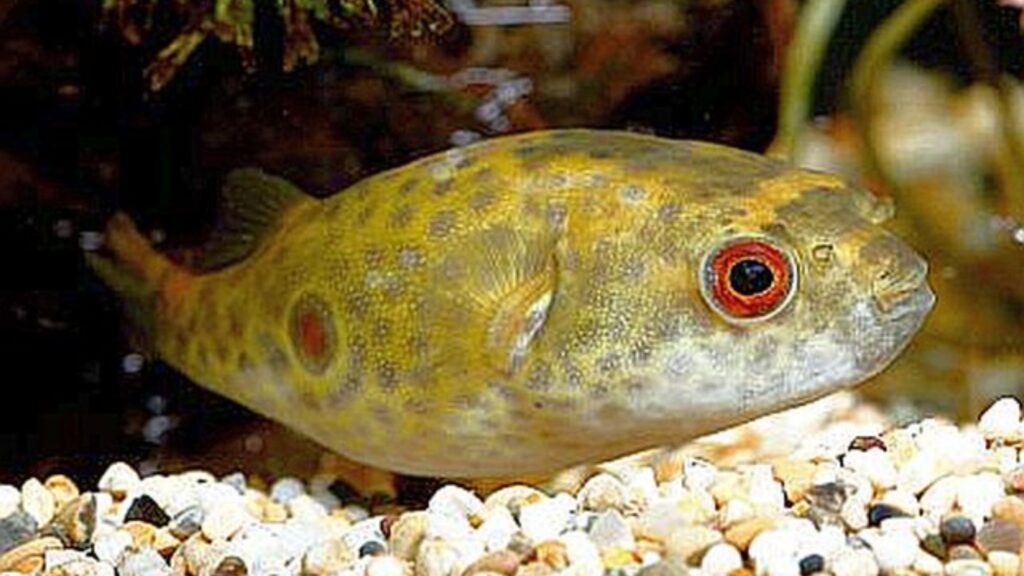
The Target Puffer Fish is a medium size species that comes 6 inches long. They require a 35 inches water tank to live with a robust filtration system. This breed is nocturnal and becomes active at night. In fact, in their natural habitat, they hunt at night.
Green-Spotted Puffer
The spotted puffer can be found in Southern Asia’s salty water. They only come to fresh water for breeding. Their habitation should be set up with warm, salty water, moderate current, and strong filtration. They are highly aggressive species. So it is better to keep them in different fish tanks. However, setting up their fish tank isn’t easy. It is a type of wild-natured species. So their tank should include a lot of rock hiding places and wild vegetation.
The Green Spotted Puffer can grow up to 15 centimeters and live around ten years. In the fish tank, they require a minimum of 55 gallons of water. On the other hand, they are omnivorous in their diet but need meat regularly.
Eyespot Puffer
Eyespot puffer fish are named so because the spots on their body look like two eyes. They are also small species of puffer with a length of 3 inches. Their teeth, like Fahaka Puffer, are also ground down. They can exist in brackish or fresh water and be put in the community tank. They are aggressive and tend to kill other fish. But the skilled individuals were able to manage them.
They can be fed mollusks, shrimps, and clams. If put in a community tank, they chase down other tank mates to get food.
The fish tank setup should be customized with 15 gallons of water at 75 to 80°F temperature and a 6.5 to 7.5 pH level. The tank should be decorated with rocks, pebbles, plants, etc. Because of their dynamic nature, they need extra space in the tank.
Pea Puffer
Pea Puffer is a popular breed of puffer fish that comes under the category of the captive-bred specimen. This kind of specimen lives longer than others and can thrive in a natural aquarium setup. These things have made them popular as aquarium fish. They are, however, tiny kinds of fish that generally grow upto 1″. They have brown-colored bodies with dark brown spots on them. They are not aggressive and can be kept in the fish tank with other fish. Their diet is also straightforward. They can be fed ramshorn snails, Malaysian trumpet shrimp and bloodworms, pond snails, and other pest snails.
Pea puffer fish are prone to illness. Sometimes they develop abnormal bulges on their stomach. In this case, they should be treated for internal parasites.
Tank setup for this species is not very hard. They need 77-80°F temperature with a 6.5-7.5 pH level. However, they need a horizontal place in the tank to establish territories.
Amazon Puffer
Amazon Puffer is located in the Amazon river in South America. That is why they are also called South American Puffers. These species grow up to 3 to 5 inches. Their bodies are covered with black and yellow stripes with yellow bellies. They are very active in nature and need larger tanks despite their small sizes. Like other puffer fish, their teeth overgrow and need to be maintained. This species can be fed shellfish, brine shrimp, insects, and plant matter.
Figure Eight Puffer
Figure eight puffer fish has marks on their body like in this letter Eight. A fully grown adult fish can be up to 3 inches tall. They also have overgrown teeth. Shellfish and snails are their primary food. These fish are aggressive. So they are not suitable to keep in a community tank.
Green Puffer
Green Puffer Fish is another freshwater puffer found in Southeast Asia’s water bodies. They are medium-sized puffers that can grow up to 7 inches. Like most puffer fish, they are also carnivorous and are crustaceans, small fish, mollusks, etc. Their front beak overgrows, for which they should be given shellfish and fish with hardened shells.
Like many puffer fish, they are also attacking in temperament. So sometimes, keeping them in communal tanks can be problematic.
Blue-Spotted Puffer
Blue Spotted Puffer is a medium-sized marine puffer fish that falls in the Actinopterygii group. They live in the Indo pacific region. It is found from eastern Africa to the Ryukyu Islands, the Line Islands, New Caledonia, and the Hawaiian Islands. It can puff up to administer the poison tetrodotoxin in its underskin Armor. They are beautiful, with blue spots and lines on their body and a sun-like pattern around their eyes. They can grow up to 5 inches.
Valentin’s Sharpnose Puffer
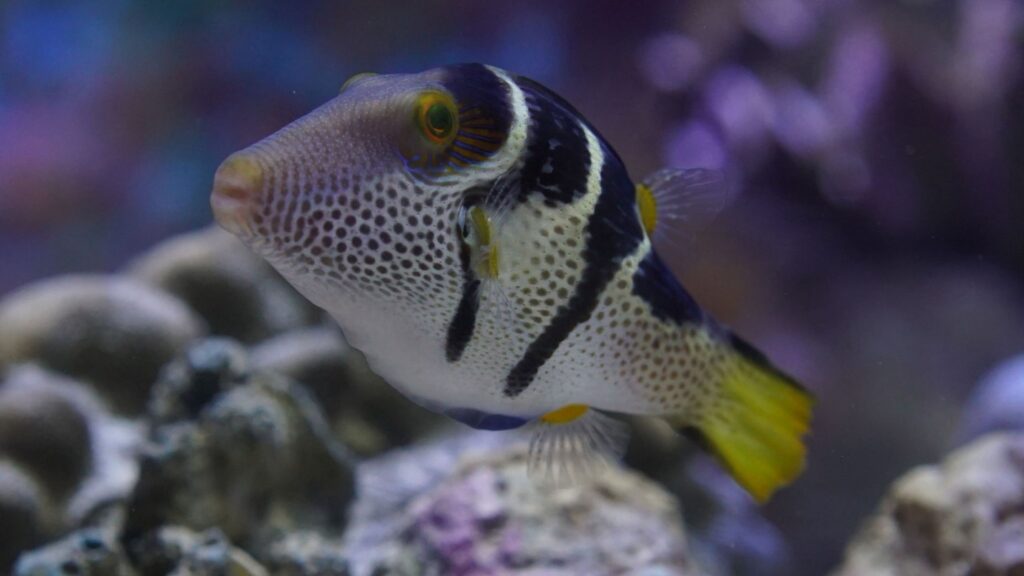
This species looks beautiful with long pointed noses. So it is named thus. Their bodies are covered with black stripes and yellow dots. Their fins and tails are also yellow.
They are found in the Pacific and Indian Oceans. While pufferfish are known for their toxicity, Valentin’s is mainly well known since it has one of the most substantial neurotoxins of any fish. It’s harmful to such an extent that other fish have camouflaged its appearance to keep away from predation.
Northern Puffer
Northern Puffers are found in the waters of the Atlantic coast. They are ubiquitous on the East Coast of The United States. They can be found with a yellow and white bodies, including black patterns. These puffers can grow up to 14 inches.
They can swim a long distance from Florida to Newfoundland. In the capital region of The United States, these northern puffers are called sugar toads.
Blackspotted Puffer
These puffers have a seal-like appearance. They look adorable, so they can also be called dog-faced puffers. They have dark spots around their mouth. They are long-sized puffers that can grow up to one foot. Mainly in the Indian and Pacific Oceans, such species can be found.
Porcupine Puffer
Porcupine Puffer Fish are also called blowfish. However, they belong to a different family than pufferfish. Porcupinefish are alike in the sense they can likewise swell their bodies and have extraordinarily harmful tetrodotoxin in their organs. Their spine is exceptionally sharp, which gives them defensive power.
| Popular Name | Scientific Name | Price |
| Dwarf Puffer | Carinotetraodon Travancoricus | $2 to $3 |
| Golden Puffer | Arothron Meleagris | $2 to $10 |
| Congo Puffer | Tetraodon Miurus | $40 |
| Fahaka Puffer | Tetraodon Lineatus | $20 to $30 |
| MBU Puffer | Tetraodon Mbu | $175 to $450 |
| Red-eyed Puffer | Carinotetraodon borneensis | $20 to $30 |
| Imitator Puffer | Carinotetraodon imitator | $11 |
| Ocellated Puffer | Leiodon cutcutia | $35 |
| South American Puffer | Colomesus asellus | $17 to $ $18 |
| Red-Tailed Dwarf Puffer | Carinotetraodon irrubesco | $20 |
| Target Puffer | Pao Leiurus | $60 to $85 |
| Popular Name | Scientific Name | Price |
| Green-Spotted Puffer | Tetraodon nigroviridis | $15 to $22 |
| Eyespot Puffer | Tetraodon biocellatus | $8 |
| Pea Puffer | Carinotetraodon travancoricus | $7 |
| Amazon Puffer | Colomesus Asellus | $25 to $33 |
| Figure Eight Puffer | Tetraodon biocellatus | $10 to $13 |
| Green Puffer | Tetraodon nigroviridis | $3 |
| Blue-Spotted Puffer | Arothron caeruleopunctatus | $90 to $150 |
| Valentin’s Sharpnose Puffer | Canthigaster valentini | $10 to $15 |
| Northern Puffer | Sphoeroides maculatus | $3 |
| Blackspotted Puffer | Arothron nigropunctatus | $80 to $150 |
| Porcupine Puffer | Diodon holocanthus | $80 to $120 |
Know All About the Nature of Puffer Fish!
Most puffer fish are significantly in nature. Despite their small size, they can kill bigger fish than themselves. Their sharp teeth can give anyone painful bites. Even other fish in the tank can be harmed severely by the suffering fish. So it is better to keep them in different tanks alone.
Even maintaining puffer fish in a community fish tank is not. They require strongly filtered water with a maintained temperature and pH balance. Some of them can choose a special-sized tank to live comfortably. Hence puffer fish may look attractive, but they are not an excellent choice to keep in community fish tanks.
Can Puffer Fish be Good Pets?
More than a hundred types of puffer fish are available worldwide. Each has a different size, nature, diet, and habitat. So the reason behind not choosing puffer fish as a good pet is their breeding, size, temperament, and myths. Some puffer fish can go extremely large; hence they need a special-sized fish tank. But many people are careless or unaware of this fact. For example, Fahaka Puffers and Starry Puffers need custom size fish tanks. Keeping these giant species in a small enclosure can shorten their lives and make them unhealthy.
Breeding is a big problem for puffer fish if kept in an aquarium. Most of them are not used to breeding in small tanks. So keeping them in a fish tank can not be ethical at all.
Many puffer fish have their natural habitat in the world’s atmosphere. So a tiny enclosure and artificial setting can make them sadder. Another problem is that most fish breeders do not inform the buyers how long a baby fish will grow as an adult. So the buyers, in general, are not prepared for a giant size. So before buying puffer fish, be aware of their nature and temperament.
By doing that, you will get to know how to take care of them without harming them a bit. So for these reasons, puffer fish can not be considered a good pet for your fish tank.
What is the Natural Habitat of Puffer Fish?
Puffer Fish can be found worldwide. They live in both brackish water and fresh water. But they have a likeness for warm water. They like to live in the wild environment with live vegetation like mollusks.
Most of the puffer fish have overgrown teeth, which continue to grow. It grows until the upper teeth are locked with the lower half. As a result, they end up dying because of starvation.
How to take Care of your Puffer Fish?
Puffer Fish need special care while they are kept in water tanks. If you are fascinated with puffer fish, you should know some general trivia.
Nitrogen Sensitivity
Before putting puffer fish in the fish tank, it is necessary to cycle the tank’s water because it is sensitive to nitrate, nitrite, and ammonia. It is because most of the puffer fish is wild-caught. Ammonia, nitrate, and nitrite are not generally found in the wild nature. Even if they are exposed to nitrite and lethal ammonia, they will die quickly. So most fish should be kept in fully cycled water where nitrate should be as low as possible, preferably less than ten ppm.
Water Condition & Diet
Pufferfish need normally warm water of 75 to 80°F with a maintained pH level. To speak about their diet, most of them are predatory. So worms, snails, and shellfish can be good for their health and appetite.
Set up a Tank For Puffer Fish
The freshwater puffer aquarium should be decorated and incorporate caverns, caves, and shades to give asylum and concealing spots. Aquarium size relies upon which species you need to keep. For instance, Dwarf Pea Puffers (C. Travancoricus) can be kept in aquariums for as little as 5 gallons, while different species need 20 gallons or more for each fish. A few more significant animal varieties don’t require as much space as you would expect in light of their size since they invest a large portion of their energy unmoving.
Adding Live Plants
As puffer fish are wild, caught live plants will make their atmosphere comfortable. They also feel much more secure in a planted aquarium. Plants also help to remove their nitrogenous waste. There are some kinds of plants that you can keep in the fish tank of puffer fish to make their habitat wilder. Ludwigia, Pennywort, Red Root Floaters, Anacharis (Brazilian Water Weed), Vallisneria, Scarlet Temple, Rotala, Banana Plants, Anubias, Java Fern, Dwarf Sag, Java Moss, Subwassertang, Hornwort, Christmas Moss, Amazon Sword.
Choose Substrate Carefully
Most puffer fish prefer sand substrate, as it is already said that puffer fish are primarily wild-caught. So in the wild atmosphere, they are used to the wild substrate. Rocks and pebbles are also found in abundance in the wild natural habitats. Congo Puffer tends to mimic a rock’s color, so before making a substrate for the puffer fish, remember these points and try to include these materials in the fish tank.
How to Breed Puffer Fish
As puffer fish are wild, most can not be bred in a captive atmosphere. Minimal species can be successfully bred in the aquarium. Red-Eyed Puffer Fish, Figure Eight Puffer Fish, and Pea Puffer Fish can be bred in the fish tank, though with a limited success rate.
They lay eggs, so the spawning surface is necessary to keep the eggs safe. Some species can be bred in the community tank; others need separate tanks for breeding.
Are Puffer Fish Poisonous?
Many puffer fish contain poison within their bodies. Some of them can also bite in a flicker of attention. These bites can be painful but not much poisonous. If you keep a safe distance, puffer fish are not generally harmful.
Otherwise, they are intoxicated. But as long as you don’t eat puffer fish, there is no problem with their poison. Pufferfish do not spread poison through their bites.
Conclusion
Puffer Fish can be rewarding if you know how to keep them. It is challenging to arrange customized tanks for them. And you have to be very skilled if you are fascinated with giant puffer fish breeds. However, their look and appearance can be a treat of your hard work.




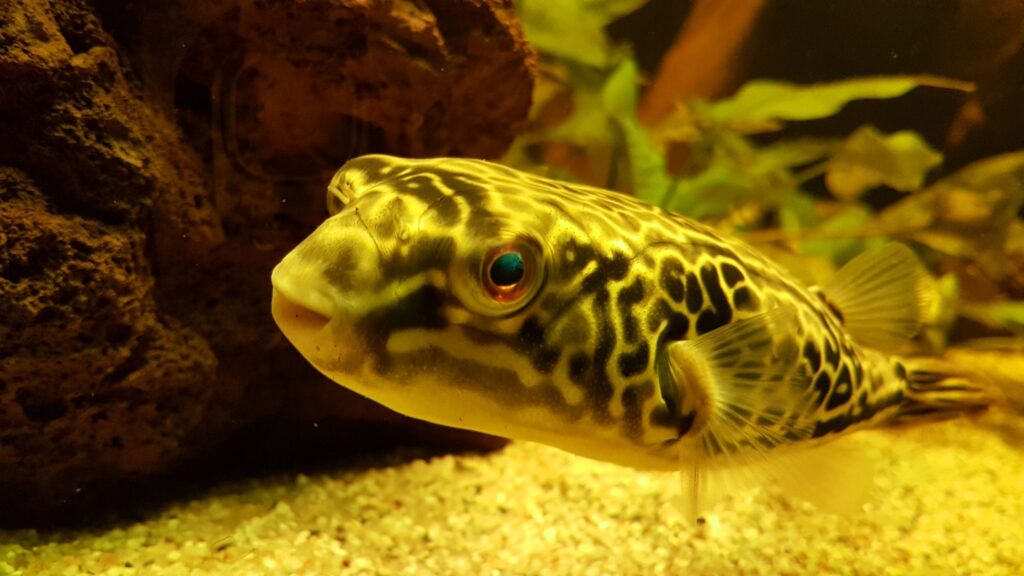
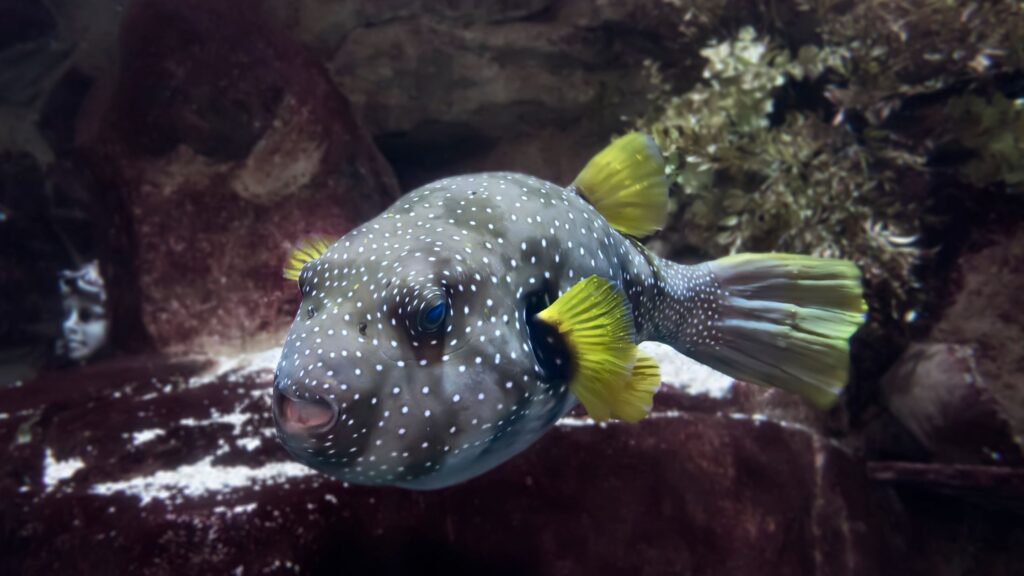
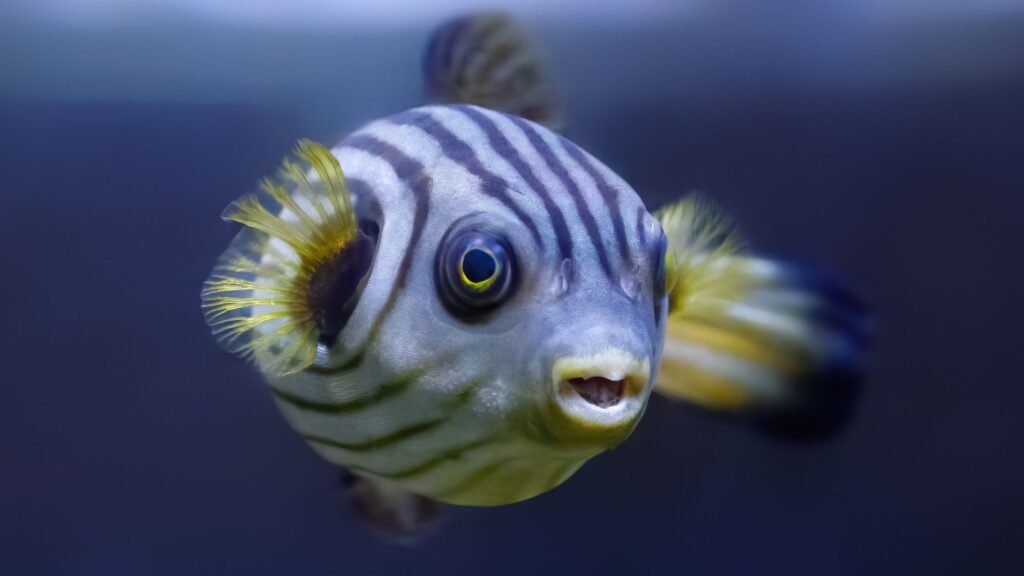

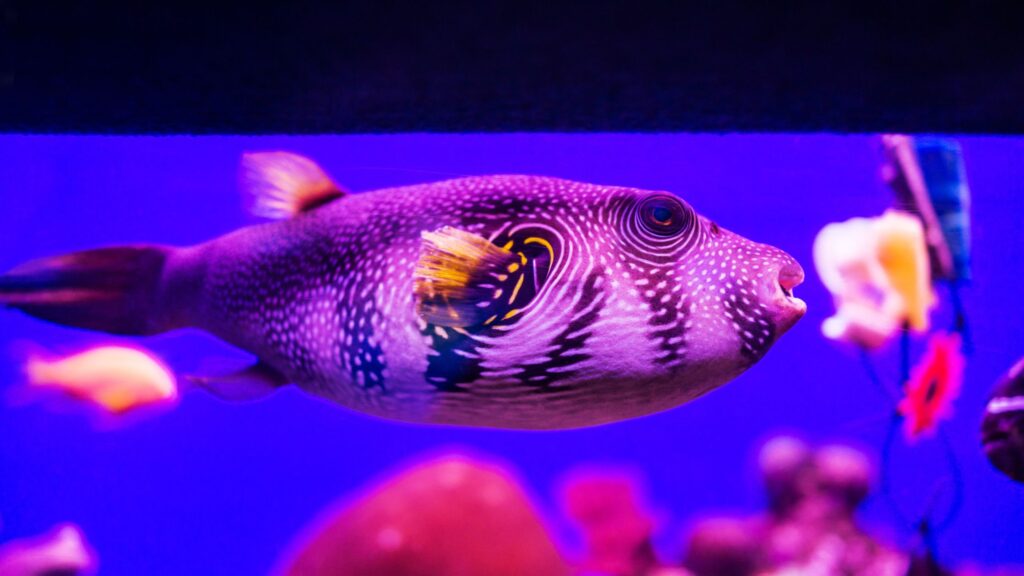
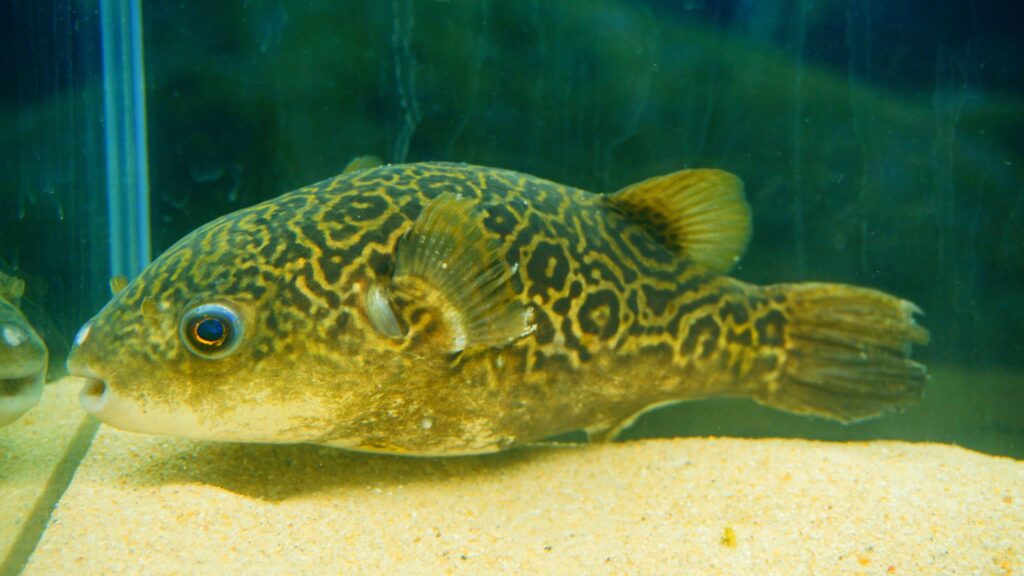
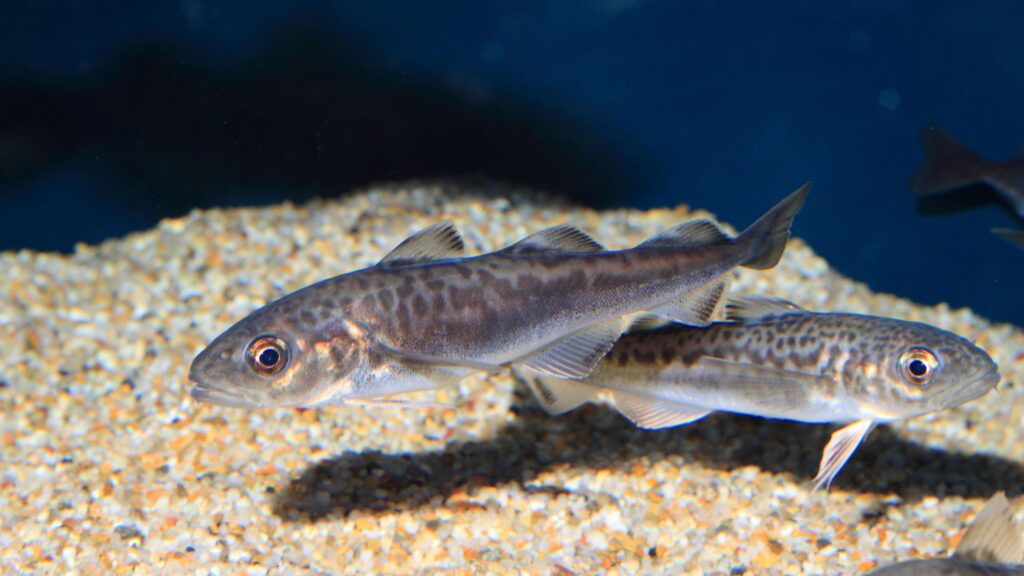
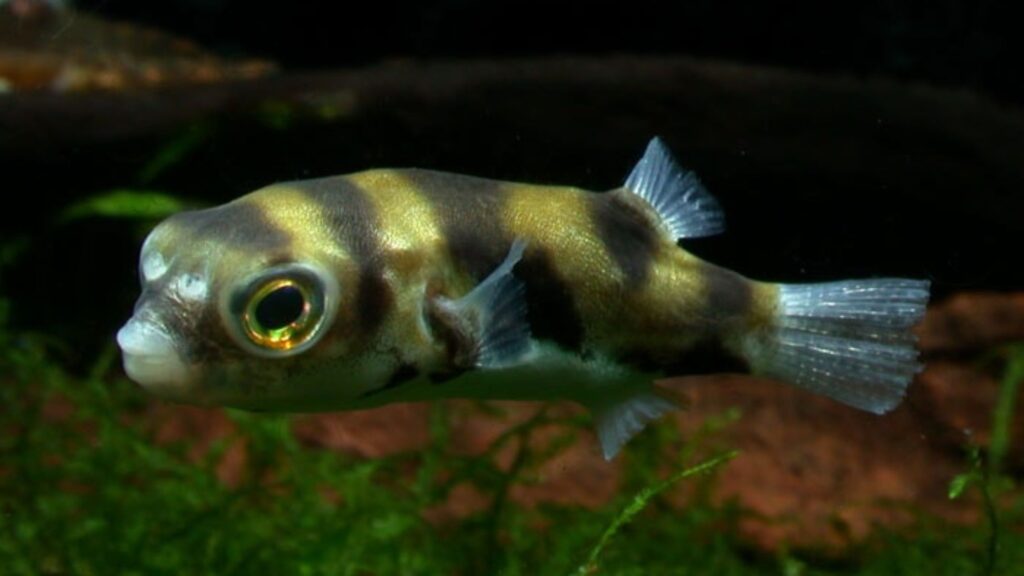
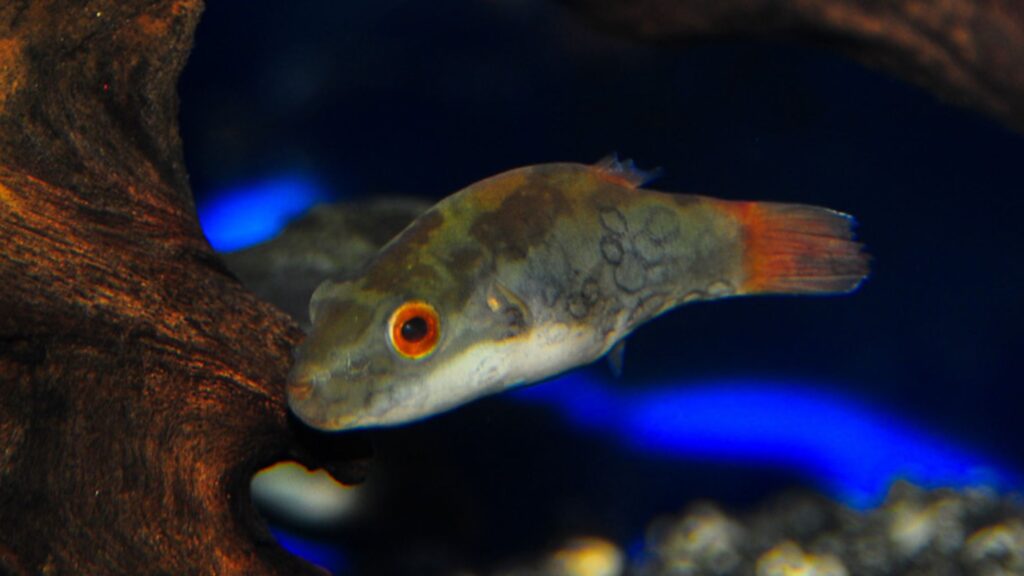
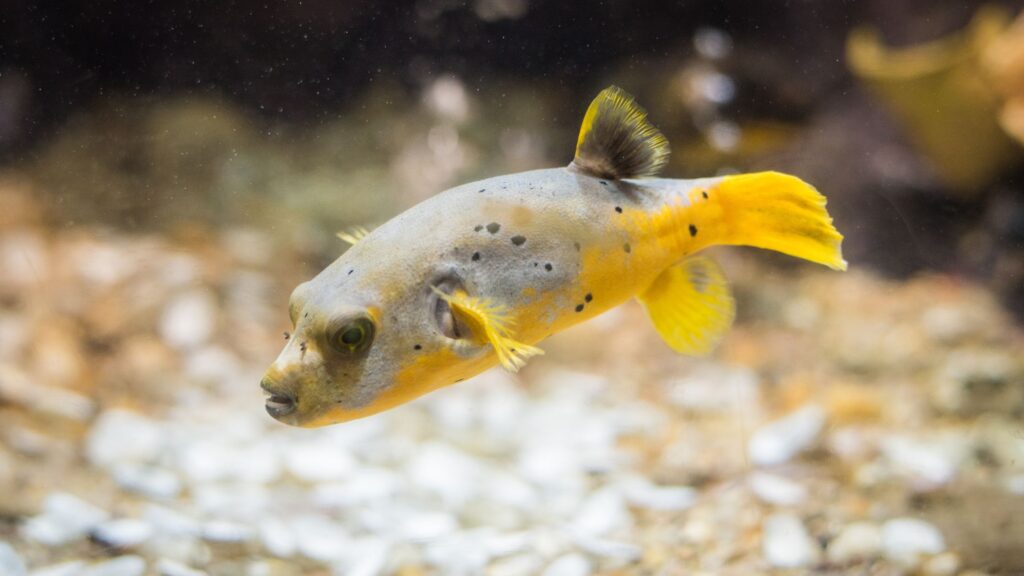
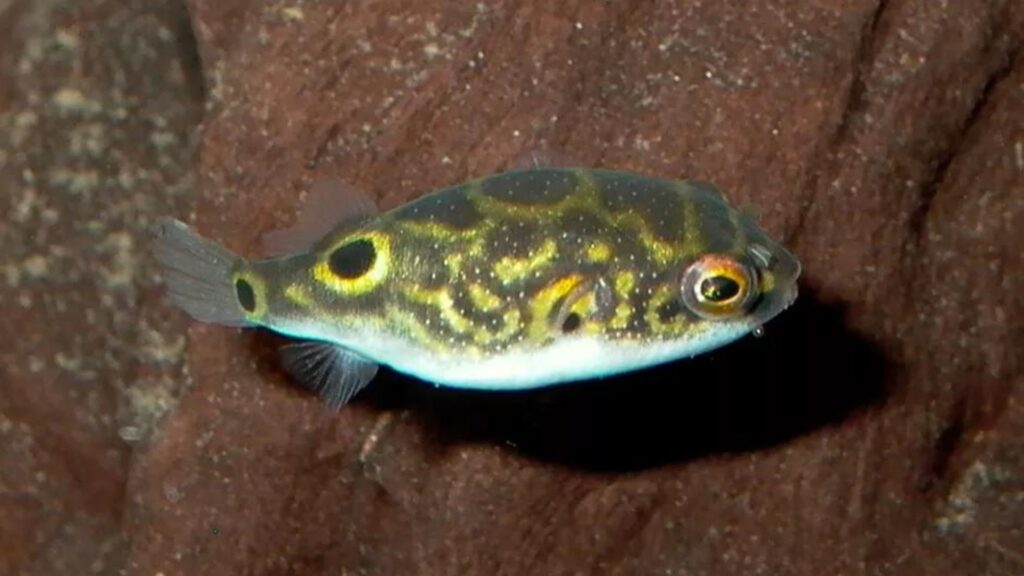
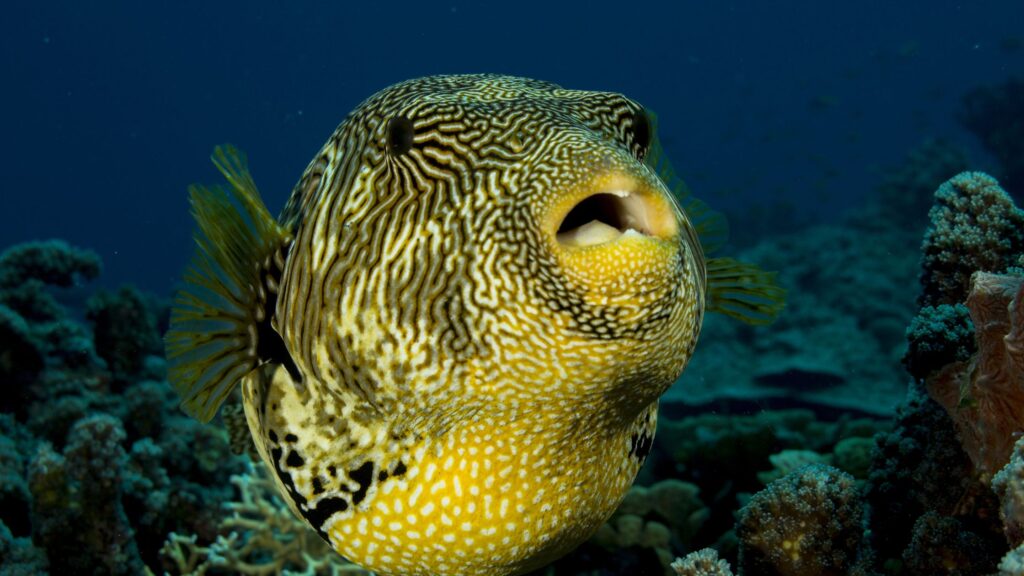
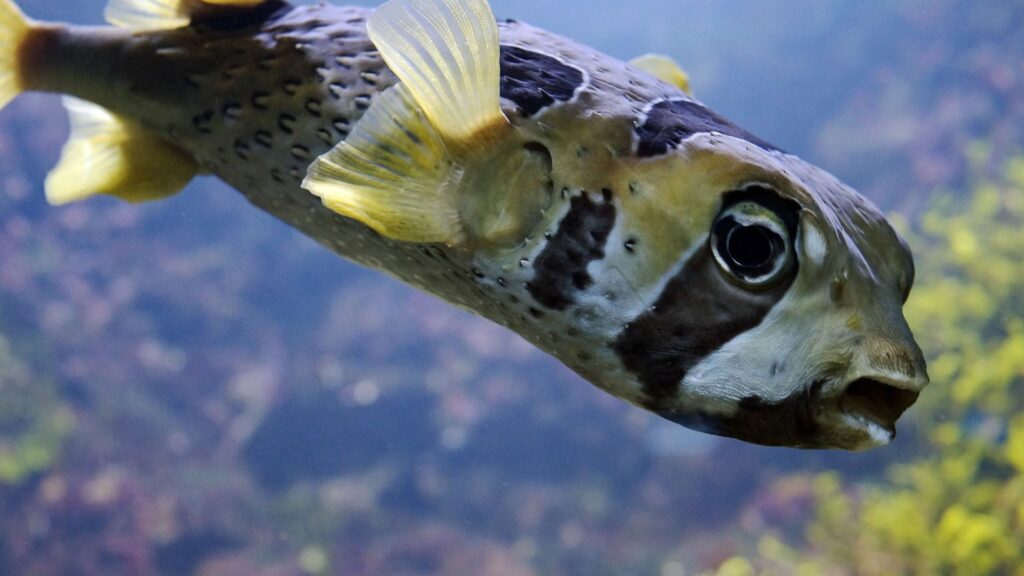
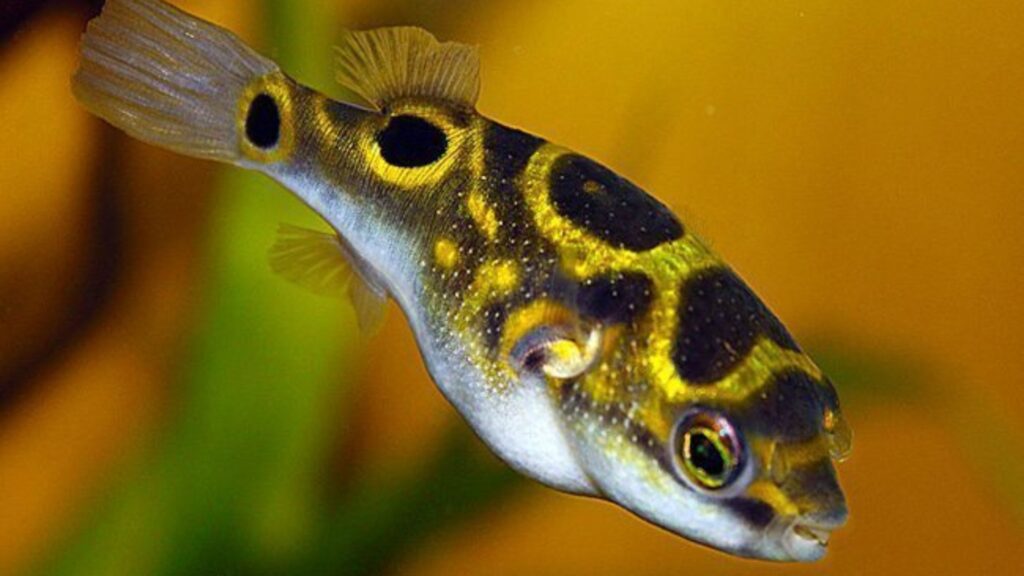
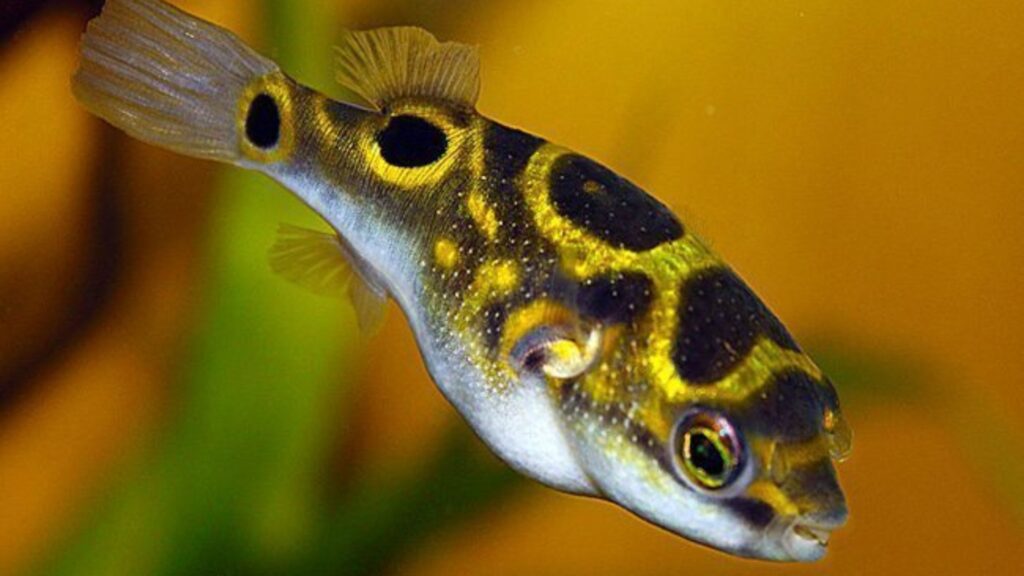
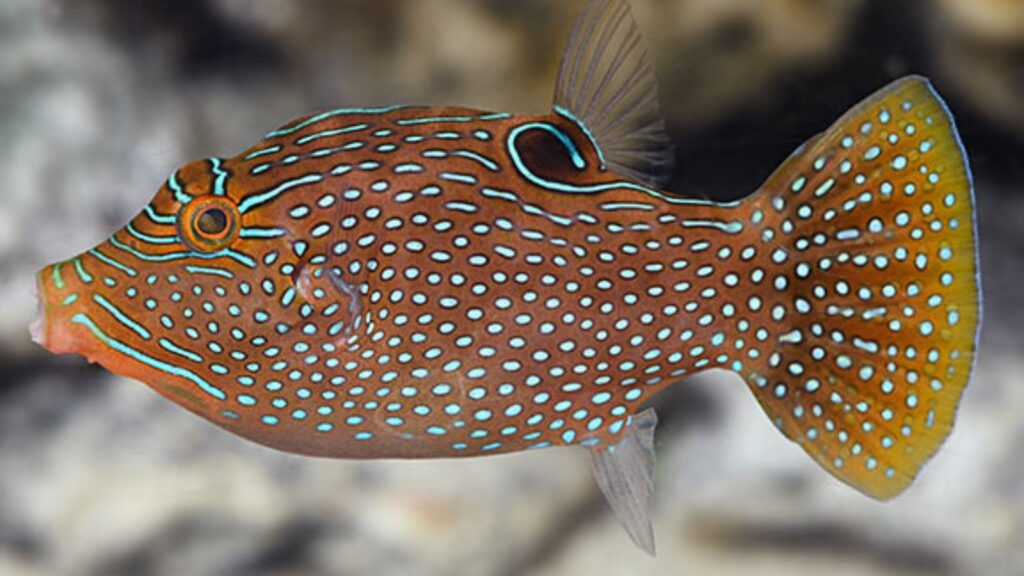
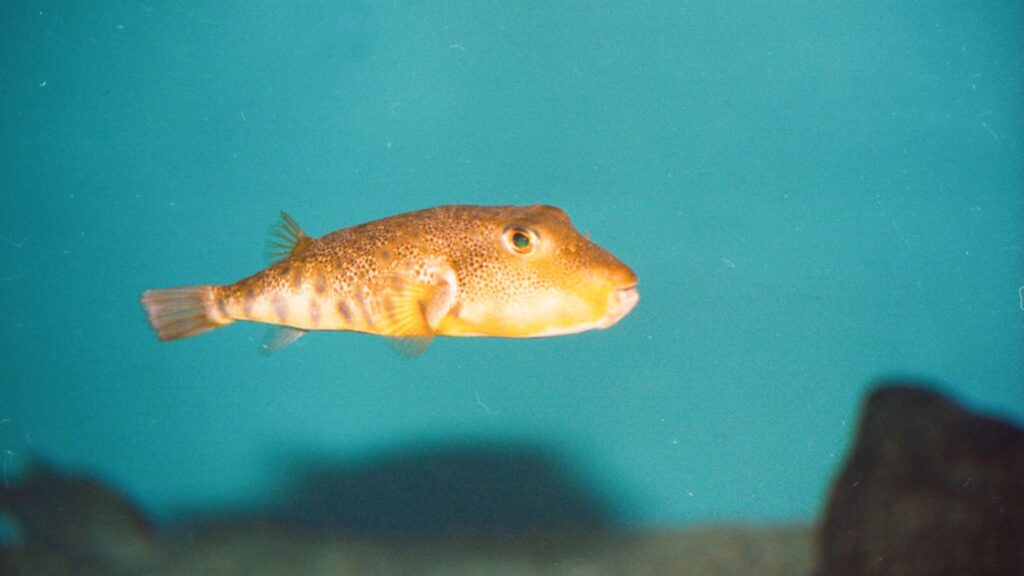
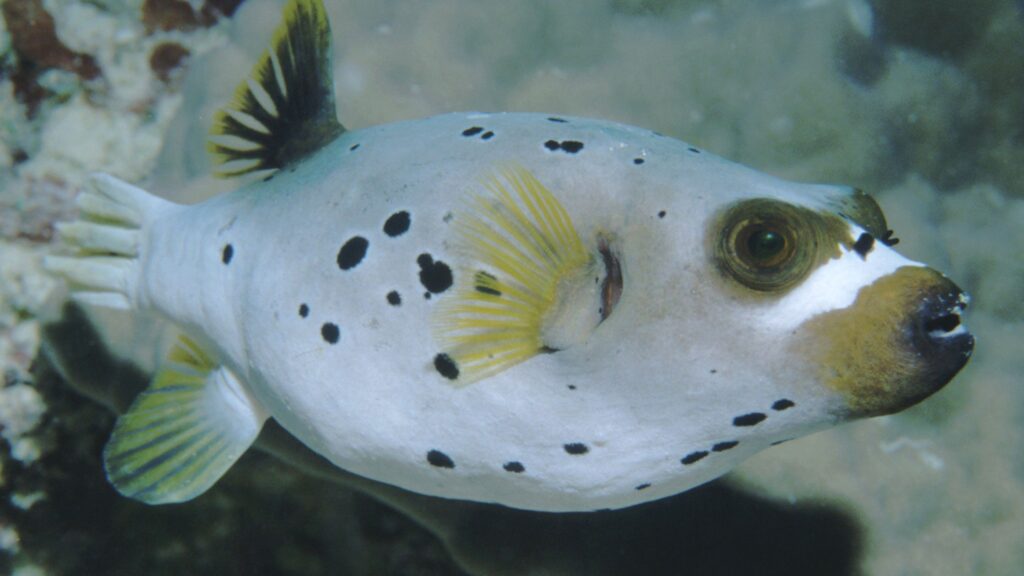
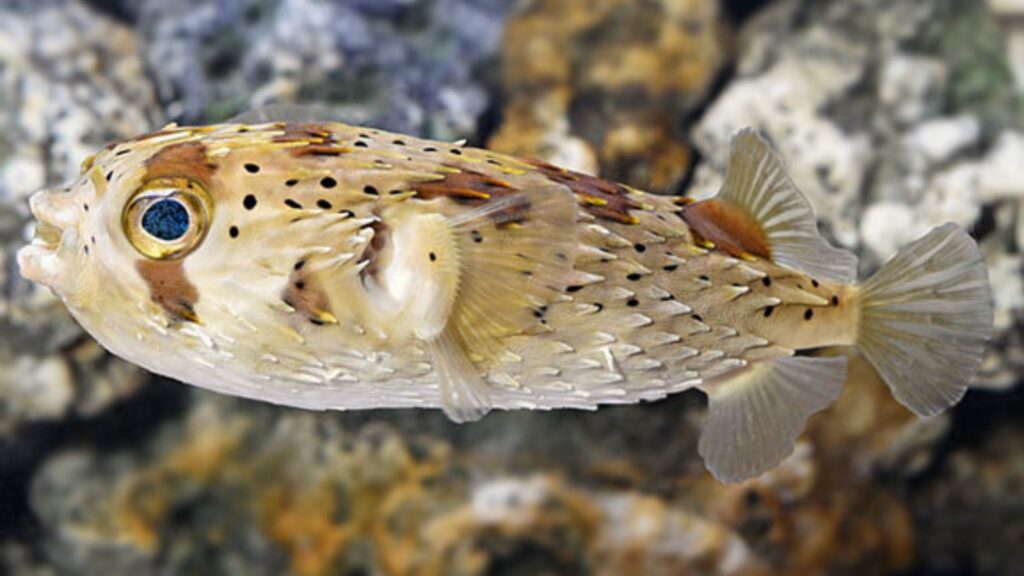




Discussion about this post